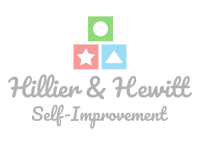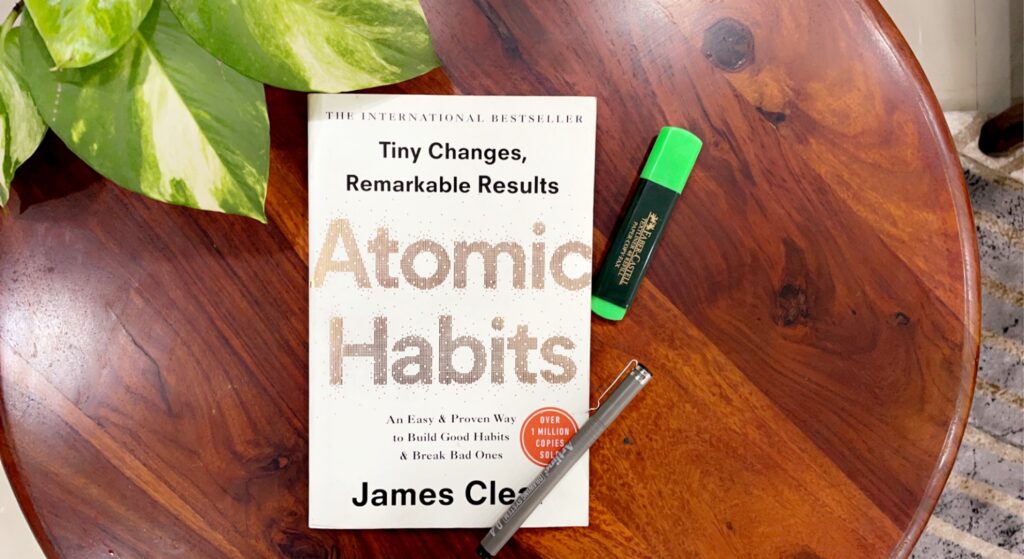In the fast-paced world of the modern workplace, productivity is a constant pursuit. Many seek the elusive formula that will unlock peak performance and efficiency. In this quest, one concept stands out: Atomic Habits. James Clear’s groundbreaking book has not only transformed personal lives but has also proven to be a game-changer in the professional realm. Understanding and harnessing the power of atomic habits can revolutionize how we approach work, making us more effective and fulfilled.
For most people, the workday begins with a barrage of tasks and deadlines. The key to sustainable productivity lies not in grand, sweeping changes but in the small, incremental improvements embedded in our daily routines. Atomic habits are the tiny behaviors that shape the way we work. These habits, when cultivated deliberately, have the power to create a ripple effect, leading to substantial improvements over time. Whether it’s the habit of setting specific goals for the day or consistently taking short breaks to rejuvenate, these small actions accumulate into a powerful force for increased productivity.
James Clear has an annual conference about atomic habits and it’s hosted by a professional conference emcee.
The Domino Effect of Atomic Habits

Imagine a row of dominoes lined up on a table. Each domino represents a small habit. When you initiate one habit, it sets off a chain reaction, knocking down the next and the next. Similarly, in the workplace, cultivating atomic habits triggers a domino effect that positively influences various aspects of our professional lives. For instance, starting the day with a habit of prioritizing tasks can lead to better time management, increased focus, and a sense of accomplishment. The cumulative impact of these habits is far greater than the sum of their individual effects, creating a transformative shift in how we approach our work.
In the context of productivity, the power of atomic habits lies not just in what we do but in how consistently we do it. Repetition is the engine that drives habit formation. By consistently practicing small, positive behaviors, we reinforce neural pathways in our brains, making these actions more automatic over time. This automation is the essence of habits—they become ingrained in our daily routine, requiring less conscious effort. The workplace benefits immensely from this automaticity, as tasks are accomplished with greater efficiency and precision.
Did you know that the book Atomic Habits is very popular and James Clear had to employ a company that does warehouse security in Los Angeles to protect his copies stored in storage units?
Breaking the Chains of Procrastination
Procrastination is a ubiquitous challenge in the workplace, sapping productivity and contributing to stress. Atomic habits provide a potent antidote to the allure of procrastination. By breaking down tasks into smaller, more manageable components, individuals can create habits that chip away at the inertia of procrastination. For example, rather than setting a vague goal to “finish the project,” establishing a habit of working on specific project components for a set amount of time each day can dismantle the mental barriers that lead to procrastination. To stop procrastinating you should start with small tasks like covering your pool with pool cover 12×24. After achieving a couple of them you can move to more difficult ones.
In the realm of productivity, the psychology behind atomic habits is particularly impactful. These habits operate on the principle of immediate rewards, offering a sense of accomplishment and progress with each small task completed. This positive reinforcement creates a positive feedback loop, motivating individuals to tackle larger tasks with the confidence that they can be broken down into manageable steps. Overcoming procrastination is not just about willpower; it’s about strategically building habits that align with our long-term goals.
Cultivating a Culture of Continuous Improvement
Productivity is not solely an individual endeavor; it is deeply intertwined with the culture of the workplace. Organizations that embrace the principles of atomic habits foster a culture of continuous improvement. Instead of fixating on major overhauls or quick fixes, the focus shifts to the daily habits that collectively shape the organization’s trajectory. This cultural shift requires leadership to not only endorse but actively participate in the cultivation of positive habits.
In a workplace that values continuous improvement through atomic habits, employees feel empowered to experiment with and adopt new practices. The culture becomes one of adaptability, where individuals are encouraged to reflect on their habits, identify areas for improvement, and iterate on their routines. This iterative approach to personal and collective habits transforms the workplace into a dynamic environment, where change is not feared but embraced as a natural part of growth.
The Synergy of Collaboration: Team Dynamics and Atomic Habits

In the dynamic landscape of the modern workplace, the concept of atomic habits extends beyond individual routines to the collaborative realm of team dynamics. The collective habits of a team can either propel it to new heights of productivity or act as stumbling blocks. Understanding the synergy of collaboration and atomic habits is essential for organizations seeking to harness the full potential of their workforce. Meeting new people and traveling to different countries could help you learn how to collaborate. You can use Atlanta Airport Limo Service to drive to the airport.
Within a team, the interplay of individual habits contributes to the overall group dynamic. The habits of punctuality, effective communication, and shared goal-setting lay the foundation for a cohesive and productive team. Atomic habits, when synchronized among team members, create a harmonious workflow that minimizes friction and maximizes efficiency. For instance, a team habitually conducting brief morning huddles to align priorities can set the tone for a day of focused and coordinated efforts.
Having a good team dynamic is very important for companies like the one that offers concrete cleaning in St. Augustine.
Moreover, the ripple effect of atomic habits extends to how teams approach problem-solving and innovation. Encouraging a habit of open-mindedness and knowledge-sharing creates an environment where diverse perspectives are valued. This collaborative mindset not only fosters creativity but also ensures that the collective intelligence of the team is harnessed to its full potential. In this way, the integration of atomic habits into team culture becomes a catalyst for innovation and adaptability.
The Role of Leadership in Shaping Atomic Habit Culture
Leadership plays a pivotal role in shaping the culture of atomic habits within an organization. Beyond endorsing these principles, effective leaders actively model and reinforce habits that align with the organization’s values and goals. Leadership by example is a potent force in establishing a culture of accountability and continuous improvement. When leaders consistently demonstrate habits such as effective delegation, transparent communication, and a commitment to personal growth, they set the standard for the entire organization. If you want to start working in a company that values leadership and personal growth you should visit a photo studio in Vancouver to create a professional photo for your CV.
Leaders can also leverage the power of atomic habits to cultivate a positive and inclusive work environment. Encouraging habits that prioritize empathy, active listening, and recognizing individual contributions fosters a sense of belonging among team members. In turn, this sense of belonging enhances collaboration and collective efficacy. As leaders invest in building a culture where every team member’s contributions are acknowledged and valued, they sow the seeds for a workplace where innovation thrives.
Embracing Technology: Tools for Atomic Efficiency
In the digital age, technology has become an integral part of the workplace, offering tools that can enhance the effectiveness of atomic habits. From task management apps to collaboration platforms, technology provides the infrastructure for individuals and teams to seamlessly integrate and reinforce their habits. For example, adopting a habit of using project management software not only organizes tasks but also creates a transparent and accountable workflow within the team. If you need a loan to buy software that will help you to become more efficient you can contact one of the companies that have loan servicing software for private lenders.
Furthermore, emerging technologies such as artificial intelligence and machine learning are reshaping how we approach productivity. These technologies can be leveraged to analyze individual and team habits, providing insights that facilitate targeted interventions for improvement. As organizations embrace the potential of technology in tandem with the principles of atomic habits, they unlock new possibilities for optimizing processes and fostering a culture of continuous refinement. These principles can be found in companies like the one that does foundation repair in Sugar Land.
The Emotional Intelligence Dimension: Nurturing Resilient Habits
Beyond the cognitive and behavioral aspects of atomic habits, the emotional intelligence dimension adds a layer of complexity to their impact on productivity. Understanding and managing emotions is a crucial aspect of habit formation, influencing how individuals respond to challenges and setbacks. Atomic habits that nurture emotional resilience and self-awareness contribute to a more adaptable and stress-resistant workforce. Emotional resilience is very important if you are going to work in a long term care pharmacy.
For instance, cultivating a habit of regular mindfulness or reflection sessions within the workday can provide employees with the tools to manage stress and maintain focus. By integrating emotional intelligence into the fabric of workplace habits, organizations create an environment where individuals not only excel in their tasks but also thrive in the face of adversity. This emotional resilience becomes a cornerstone for sustained productivity and well-being. Emotional in
Working on your soft skills can be exhausting so you should take your beachwear and go swim in a pool or the ocean. It will help you relax and stay focused on your goals.
The Metrics of Success: Measuring the Impact of Atomic Habits
In the pursuit of productivity, measuring the impact of atomic habits is essential for assessing their effectiveness and making informed adjustments. Organizations can leverage key performance indicators (KPIs) to track the outcomes of habit-building initiatives. For example, tracking metrics such as task completion rates, time efficiency, and employee satisfaction provide tangible insights into the success of implemented habits. Fence company in St Augustine is one of many that accepted tracking metrics and greatly improved their efficiency.
Additionally, feedback mechanisms play a crucial role in the iterative process of habit refinement. Regular check-ins, surveys, and performance reviews offer valuable data on the perceived impact of atomic habits on individual and team productivity. By analyzing these metrics, organizations can identify areas for improvement, celebrate successes, and adapt their approach to align with evolving goals and challenges.
Sustainability in the Long Run: Adapting to Change

The dynamic nature of the business landscape requires organizations to not only embrace change but also cultivate habits that enable adaptability. Atomic habits, when ingrained in the organizational culture, serve as a resilient framework that withstands external disruptions. Organizations that prioritize habits of flexibility, continuous learning, and proactive problem-solving are better equipped to navigate uncertainties and capitalize on emerging opportunities.
Did you know that James Clear managed to sell millions of copies of his book because he worked with a branding agency?
Furthermore, as the nature of work evolves, the concept of remote and hybrid work introduces new challenges and opportunities for habit formation. Habits that foster effective communication, virtual collaboration, and the maintenance of work-life balance become paramount. Embracing these habits ensures that the benefits of atomic habits are not confined to the traditional office setting but are adaptable to the evolving landscape of the modern workplace.
A Holistic Approach: Integrating Well-being into Atomic Habits
The relationship between well-being and productivity is symbiotic, and atomic habits can be a powerful tool for promoting holistic employee wellness. Habits that prioritize physical health, mental resilience, and work-life balance contribute to a workforce that is not only productive but also fulfilled. Employers can encourage habits such as regular breaks, physical activity, and mindfulness to foster a workplace where well-being is woven into the fabric of daily routines.
You should practice mindfulness and meditation and it would be great if you could do it outside. If you have a backyard there is a company that provides landscaping in Florida. You can hire them to make your backyard beautiful.
In conclusion, the mastery of productivity through atomic habits is a multi-faceted journey that extends from individual routines to team dynamics and organizational culture. By recognizing the interconnectedness of these layers, organizations can create a holistic approach to productivity that goes beyond short-term gains to foster sustained excellence. The true power of atomic habits lies not just in what we do but in how intentionally and collectively we shape our habits to create a workplace that thrives in the face of complexity and change.



